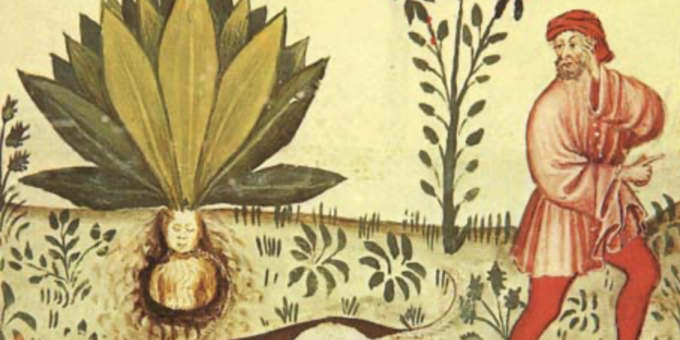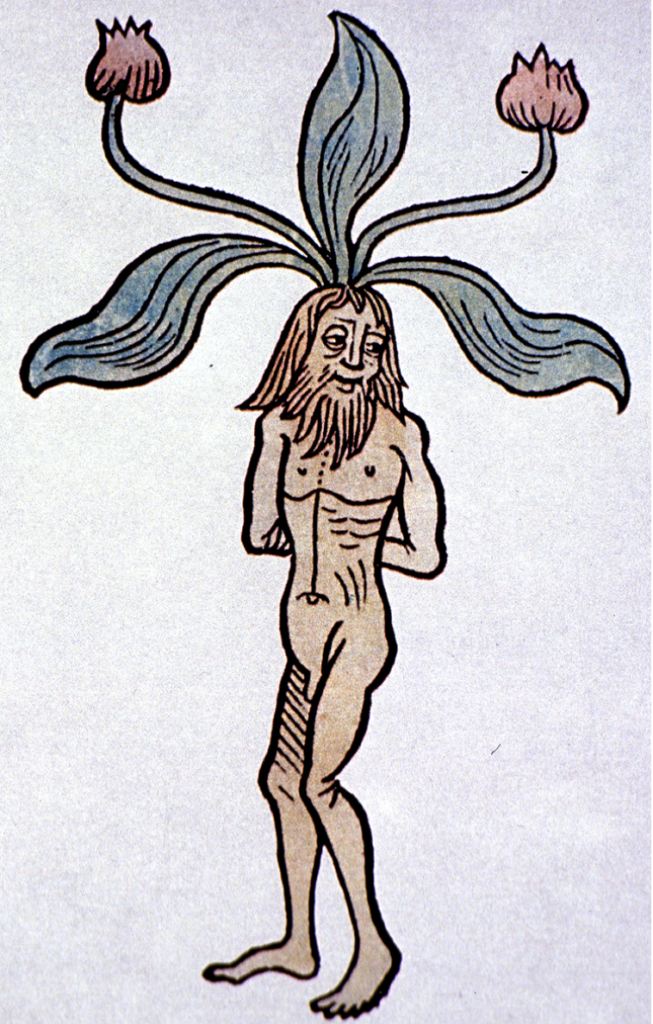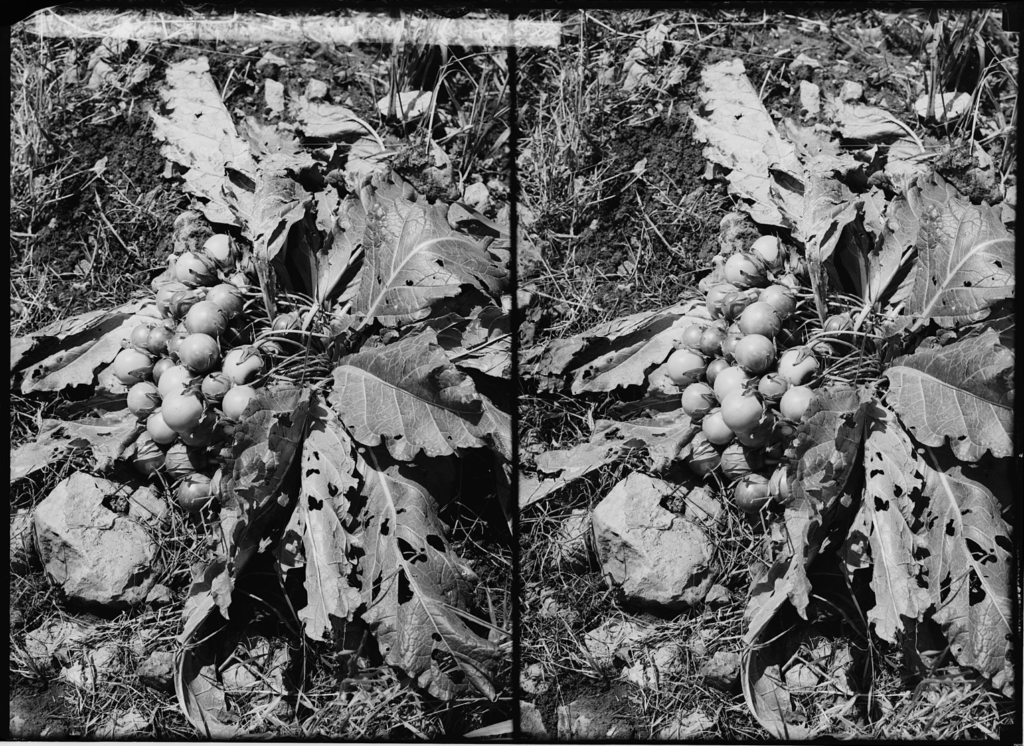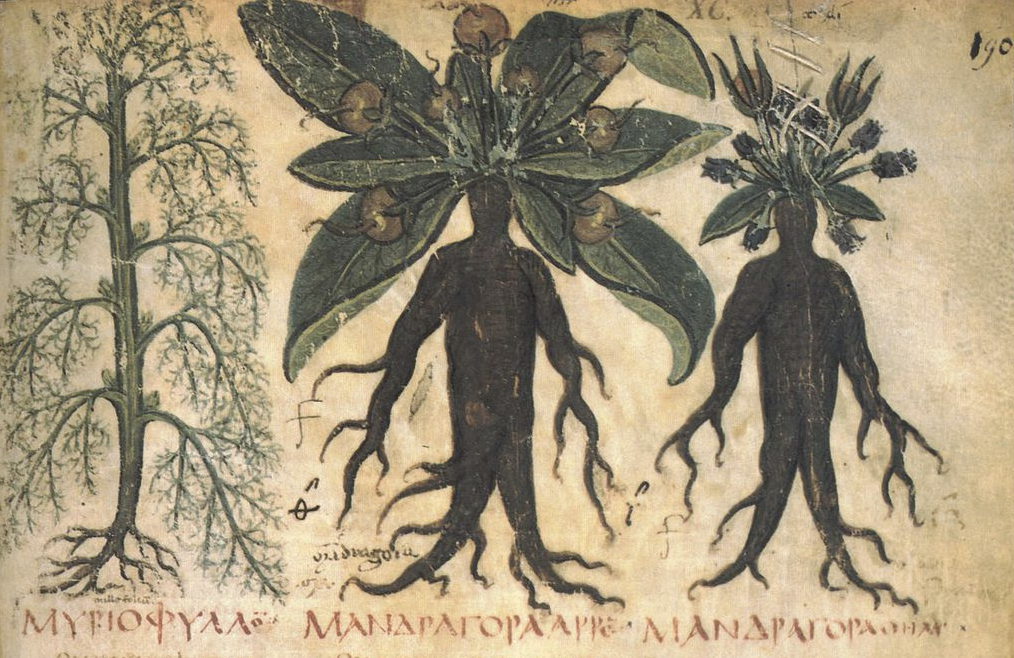
The history of the mandrake root is long and fascinating. But before we dive too deep into the mandrake’s history, let’s take a look at how the root has been used for other purposes.
Mandrake root is a type of herb that has been used for centuries in traditional medicine.
It is probably best known for its root growing in the shape of a person. As Richard Cavendish (The Black Arts) wrote:
“The mandrake has magical power because its root often resembles a human body. Writing in the twelfth century, Hildegard of Bingen said that ‘because of this likeness which it has to man, it is more amenable to the influence of the Devil and his wiles than other plants.’ Mandrakes were classified as male or female. The male is white mandragora, which has a thick root, black outside and white inside. Its leaves spread out close to the ground and it has heavily scented blossoms and yellow berries, which have a soporific effect if eaten and were used as a narcotic and anesthetic. The female black mandragora is similar, but its root is often forked. There is also a third type, called morion or fool’s herb.”

The root is dried and ground into a powder, which is then used to make teas, tinctures, and capsules. The root is used for a variety of purposes, including treating anxiety, depression, and insomnia.
Its antidepressant qualities have been known since Ancient Greece when Hippocrates, the Father of Medicine, said, “a small dose in wine, less than would occasion delirium, will relieve the deepest depression and anxiety.”
If you are considering using mandrake root to improve your health, it is important to consult with a healthcare professional before beginning treatment. Mandrake root may interact with other medications you are taking, so it is important to discuss all of your health conditions and medications with your healthcare provider. Additionally, it is important to start with a low dose of mandrake root and increase gradually to avoid adverse effects.

Superstition
An article published in 1905 tells us that the mandrake has a soul:
“The mandrake is supposed to possess a soul, owing to its extraordinary resemblance to a human face, and in medieval times it was believed that one could hear the dying shrieks of the mandrake root as it was torn up from the soil. The adventurous person who attempted such a dangerous task stopped his ears with wax so that he might not hear the groans of the mandrake root. Its possession was considered by the ancient Germans to bring good luck, money, and love to the owner, so the happy possessor dressed them in the same manner as children do dolls and kept them as precious jewels in a casket. When required, their services were utilized for healing purposes or for the divination of future events.” [Source: The Dolores star. (Dolores, Montezuma County, Colo.), 14 July 1905.]
Witchcraft in the Mandrake Root’s History
Mandrake root is a plant that has been used for centuries in witchcraft. The root is said to have many magical properties, including the ability to summon spirits and grant wishes. It is also said to be able to heal the sick and to protect against evil.
Mandrake root is thought to be especially powerful when used in conjunction with other magical herbs and stones. Some people believe that it is best to gather the root on a Friday during a full moon.

The root can be used in many different ways, including as an incense, a tea, or a potion. It can also be worn as a talisman or carried as a charm.
The root is also thought to be a powerful aphrodisiac.
C.J.S. Thompson (The Mystic Mandrake) wrote:
“It is supposed that mandragora [mandrake] acquired its reputation as a potent love charm on account of its association with Circe, as it was sometimes called ‘the plant of Circe’ after the sorceress who in the mythological legend turned men into swine with her magic potion.”
Mandrake root has been used in religious ceremonies for centuries. It is thought to be the root of the mandrake plant that is mentioned in the Bible. The root is also said to have been used in ceremonies by the ancient Egyptians, Greeks, and Romans.
It is still used in the modern world for its magical properties.

